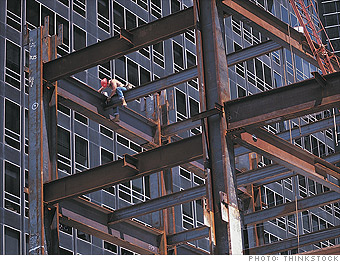
Median wages: $44,500
The men and women who build the skyscrapers and bridges of modern America have always been held in awe by the general public.
Images of them walking a four-inch steel beam hanging 500-feet above the street or sliding down an I-beam illustrate the conditions that would have lesser workers curling into a fetal position and crying for their mommies.
Steve Rank helped build downtown Houston in the 1980s and now works to improve ironworker safety via negotiated rule-making with OSHA.
One thing that has changed is the number of anchor bolts set in concrete has doubled. These bolts help hold beams steady as they go up. In the past, many bolts failed.
"The structure would fall like a house of cards," Rank says.
Site preparation is also a major issue. "Before, it would look like a scud missile hit, everything underwater in mud," Rank explains. "We'd be offloading steel and the truck wheels would sink, shifting the beams and crushing people."
Rank is still negotiating with OSHA to get better rules for reinforced-concrete buildings. These can be 20-story high constructions of poured concrete with steel rebar embedded in them.
Lax regulations governing them has contributed to more than 100 ironworker fatalities over the past few years, according to Rank.
"We want to do the same thing for reinforced concrete we did with structural steel to make the job site safer," he says.
NEXT: Sanitation worker
